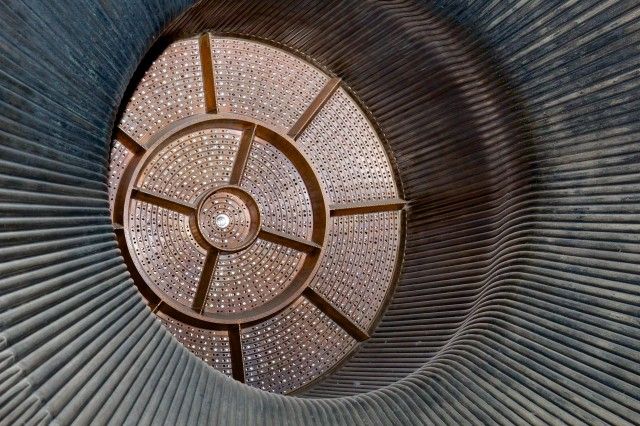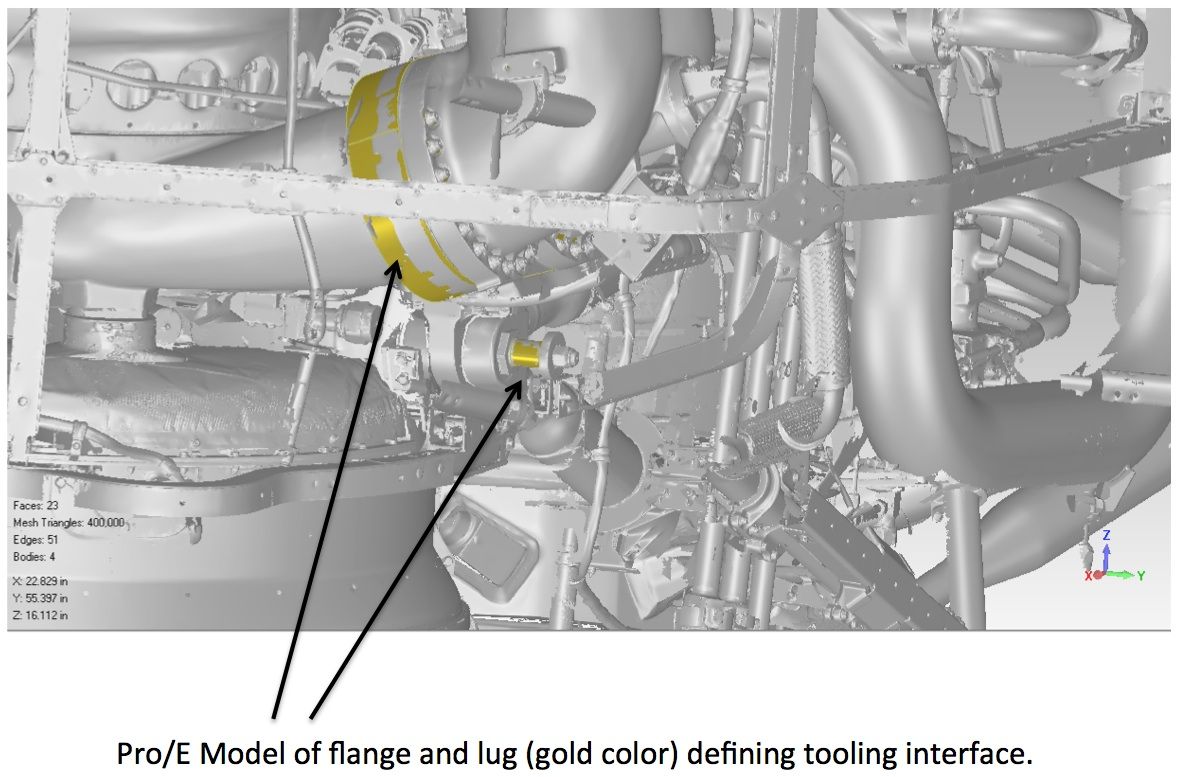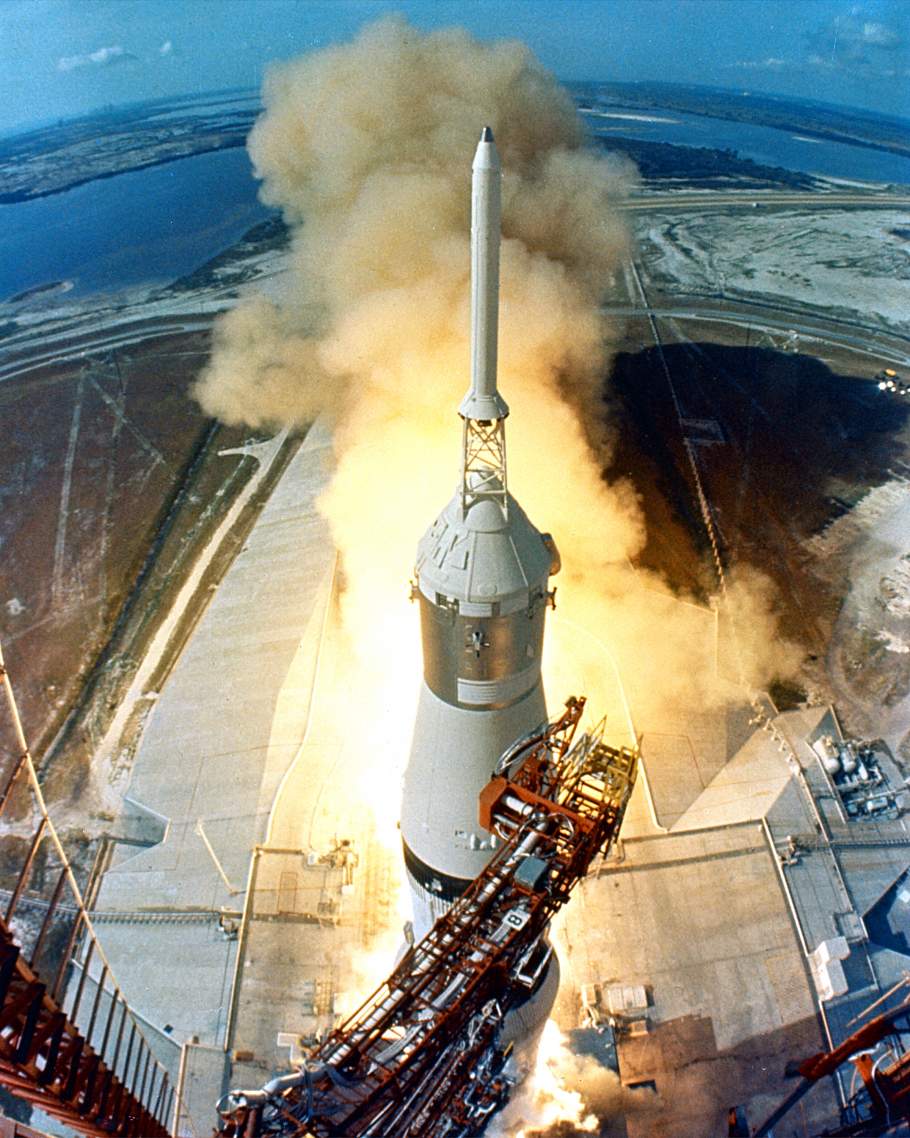There are few things that drive me more up the wall than crappy reasoning behind why the moon landings were faked.
Now, I'm not part of the "it was a fake" crowd, but given the pressures we were operating udner, the conspiracy to murder Kennedy, etc., I could understand people asking questions. And one of the problems smart people have is that we can go down some very strange rabbit holes indeed when working outside of our areas of expertise - one day I may go into how long I spent digging through planets-in-collision type stuff a la Velikovsky.
Unfortunately, leaving aside calling people who were actually there (or "claim to be there") in mission control or the apollo capsules liars, the "science" used is often ridiculous.
Take "there's no stars in the background of the moonshots".
Well, duh.
Maybe it's because I've dabbled in both high-end photography, HDR work, and 3D rendering (and thus learned what it takes to simulate camera work) but the fact of the matter is that if I saw stars in the backdrop of moon shots I'd be far more likely to believe they were fake, simply because you have an option of seeing the people and foreground details, or having the entire exposure blown out by the sheer light levels of the foreground details.
Ever had problems getting someone to look good in a photo when they're backlit by a bright light? Can't see any details because once you stop down the shutter enough to compensate for the light in the field of view, the person is almost uniformly dark?
It's the whole reason HDR pictures look so unnatural, because lower and higher light levels our brains and eyes would automatically adjust for in real time are revealed where a photograph would not capture the subtleties in the shadows. It's not what we think a photo should look like out of years of habit and familiarity.
Ditto things like "no dust clouds" for the rover, ad infinitum.
Or people I'd discussed this with recently who can perfectly well catch the reflection off of the mirrors placed there on a good night, on a decent scope.
Nevertheless, one argument brought up that was new to me, that I heard on Owens recent podcast, can be paraphrased as follows:
We have cell phones with more computing power than the entire Apollo program, but no longer have the technology to go to the moon.
Well... yes.
Systems and processes are also "technology".
I've mentioned the importance of process, aka "tribal" knowledge before. It's one of the more important things in a ship crew, for example. The little things about rolling out bearings, or pulling apart valves and pumps that are often not quite in the manuals, or only obliquely referenced, the underlying assumptions, that make a job easier or even possible. It's why it's such a travesty that so few of the US computer companies actually do their own low-level design work, much less design the machinery and processes to manufacture it.
That's what we've lost.
Take a look at the SR-71 spy plane. Sure, technology has gotten better. Jet engines more efficient pound per pound. Better stealth compounds, better understanding of aerodynamics, etc. ad nauseum.
And we could not build one today to save our lives. It would take years to even build the industrial processes and systems needed to do so. Among other things, the equipment needed to work such relatively large pieces of titanium no longer exists.
Or the space shuttle. At one point, NASA was literally buying replacement electronics for the flight computers from ebay.
Why?
Because the components were no longer in the manufacturing chain, the expected service life and usage that parts had been stocked for had long since passed, and it would take far too long to manufacture one new because no-one had the equipment in place to manufacture to the same spec and tolerances. While it is possible to replace the older components with newer ones with the same logic, inputs, and outputs, things like environmental tolerance, QA testing of the new configuration, etc. matter.
During base closures in the 90's, issues that came up for several locations included "this is the only place we produce 'x' component", and if we even needed that capability again, we'd have to redevelop the systems and processes to manufacture those from scratch, with no cadre of experienced workers and engineers to draw on.
Let's hit a little closer to home though.
The Saturn V.
Even if, for the sake of argument, we agreed to table the issue of leaving orbit for the moon, the damn things went into orbit.
And we literally have nothing today that could lift that large a payload. Yes, we have launch platforms with far more efficient engines, that are limited to much smaller payloads than what the SatV 1st stage could lift. And some, like the aforementioned shuttle, were supposed to be cheaper per pound, but weren't.
Which is why we run into articles like this one via Ars about rebuilding the F-1 engine that formed the very base of the Saturn V first stage.
Why was NASA working with ancient engines instead of building a new F-1 or a full Saturn V? One urban legend holds that key "plans" or "blueprints" were disposed of long ago through carelessness or bureaucratic oversight. Nothing could be further from the truth; every scrap of documentation produced during Project Apollo, including the design documents for the Saturn V and the F-1 engines, remains on file. If re-creating the F-1 engine were simply a matter of cribbing from some 1960s blueprints, NASA would have already done so.
A typical design document for something like the F-1, though, was produced under intense deadline pressure and lacked even the barest forms of computerized design aids. Such a document simply cannot tell the entire story of the hardware. Each F-1 engine was uniquely built by hand, and each has its own undocumented quirks. In addition, the design process used in the 1960s was necessarily iterative: engineers would design a component, fabricate it, test it, and see how it performed. Then they would modify the design, build the new version, and test it again. This would continue until the design was "good enough."
Further, although the principles behind the F-1 are well known, some aspects of its operation simply weren't fully understood at the time. The thrust instability problem is a perfect example. As the F-1 was being built, early examples tended to explode on the test stand. Repeated testing revealed that the problem was caused by the burning plume of propellent rotating as it combusted in the nozzle. These rotations would increase in speed until they were happening thousands of times per second, causing violent oscillations in the thrust that eventually blew the engine apart. The problem could have derailed the Saturn program and jeopardized President Kennedy's Moon landing deadline, but engineers eventually used a set of stubby barriers (baffles) sticking up from the big hole-riddled plate that sprayed fuel and liquid oxygen into the combustion chamber (the "injector plate"). These baffles damped down the oscillation to acceptable levels, but no one knew if the exact layout was optimal.
The baffle arrangement "was just a trial and error thing," explained Senior Propulsion Engineer R.H. Coates. "But we'd like to model that and say, well, what if you took one of those baffles out?" Because the baffles are mounted directly to the injector plate, they take up surface area that would otherwise be occupied by more injector holes spraying more fuel and oxidizer; therefore, they rob the engine of power. "So if you want to up the performance on this thing, we can evaluate that with modern analytical techniques and see what that does to your combustion stability."

And incidentally, how you overcome some of the issues related to lack of tooling/etc., using modern tech:
Taking the F-1 apart to get at its insides was always part of the plan, but as the team proceeded, it became obvious that actually cracking the thing open without breaking it was going to require specialized tooling—tooling that might have existed 40 years ago but which has long since been destroyed or lost.
The exterior scan was therefore used to develop the specialized tooling needed to fit the F-1's nuts, bolts, and fasteners. Some of the bolts were annoyingly unique—Betts noted that at least one high-torque bolt in the turbopump assembly required its own special torque adapter to remove.
The team was able to use the structured light scan of that particular bolt and, in less than half a day, to fabricate a tool using an additive manufacturing method called electron beam melting to quickly "print" 3D projects out of metal powder. Armed with this and other custom tools, Case, Betts, and Coates took the engine apart, down to its tiniest components.

As an aside, I'm sure the engineers that poured their heart and soul into this did everything they could to preserve and honor their handiwork. That said, I'm positive some stuff was lost because of bureaucrats who no longer cared to spend the money refactoring the documentation, because we could spend that money here on earth for welfare, so why give NASA money?
I'm old enough to remember that crowd.
But back to track. Even if we had an exact set of final blueprints as built, which we do now for at least the F-1 - though not the entirety of the launch platform, the gantry, support systems, etc. - courtesy of people like the team above, what we would still need to develop are the processes required to manufacture the components, weld them together (or cast and mil and deposit/print), handle the cooling/preheating, and so forth. Otherwise, we're stuck with what SpaceX is doing to great effect: building, iterating, improving, and they are nowhere near generating the proven lift capability of a Saturn V.
It's not that we couldn't redevelop and rebuild the engineering and systems/processes, it's that we don't have it now, and would have to redevelop it.
And not that landing on or navigating to the moon is simple, but the hard part is getting the sheer mass into orbit. Everything after that is finesse.
Guys like my grandfather who worked on designing one of the cameras for the later missions. Guys like the men who sat in the cockpit wouldn't have built the space suits, the pressure cabins, the lift capacity needed, lifted the requisite mass and people to orbit, and then said "screw it, let's stay here safe".

